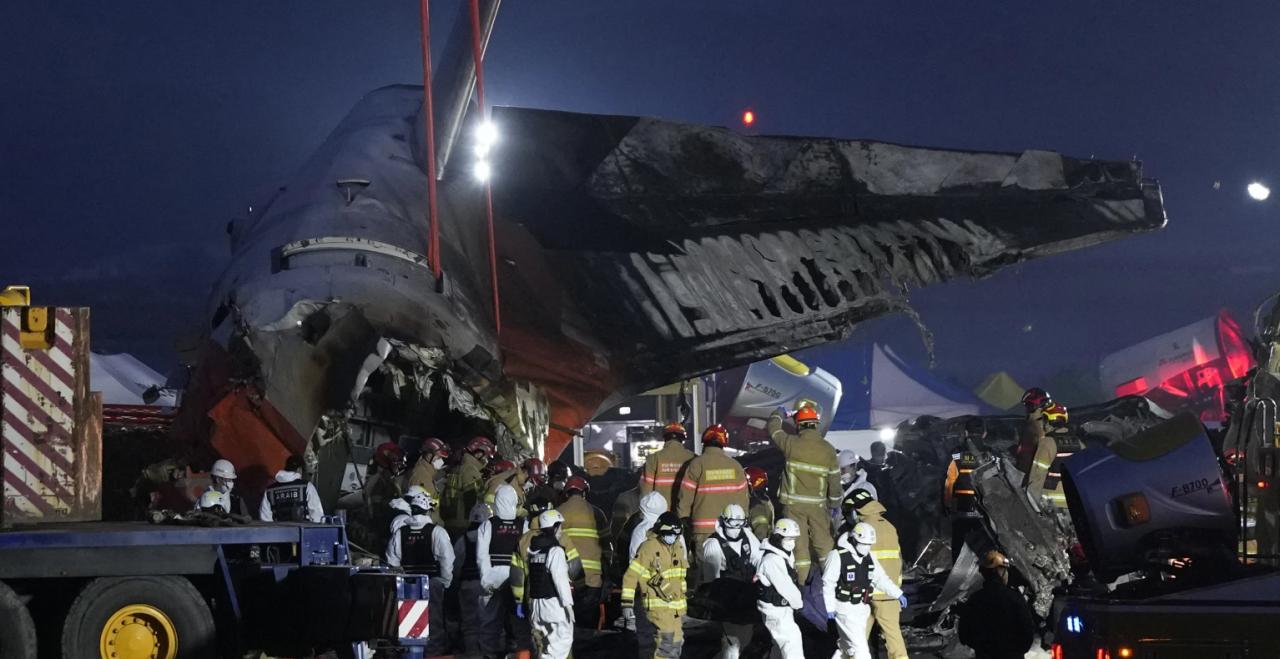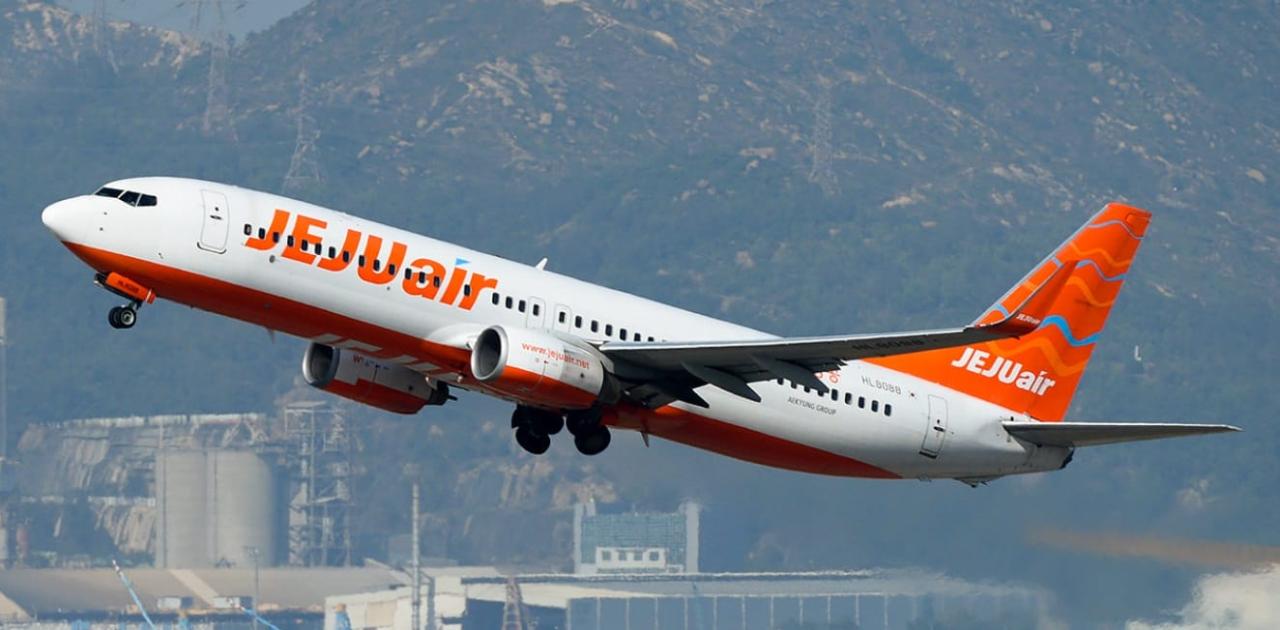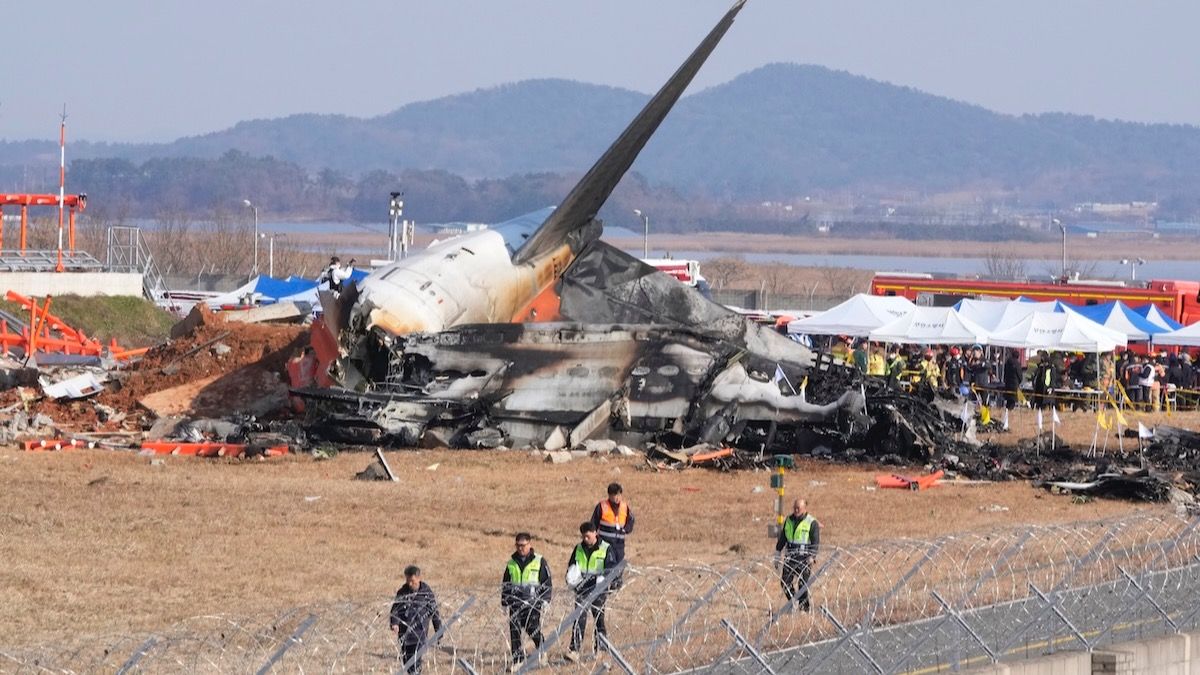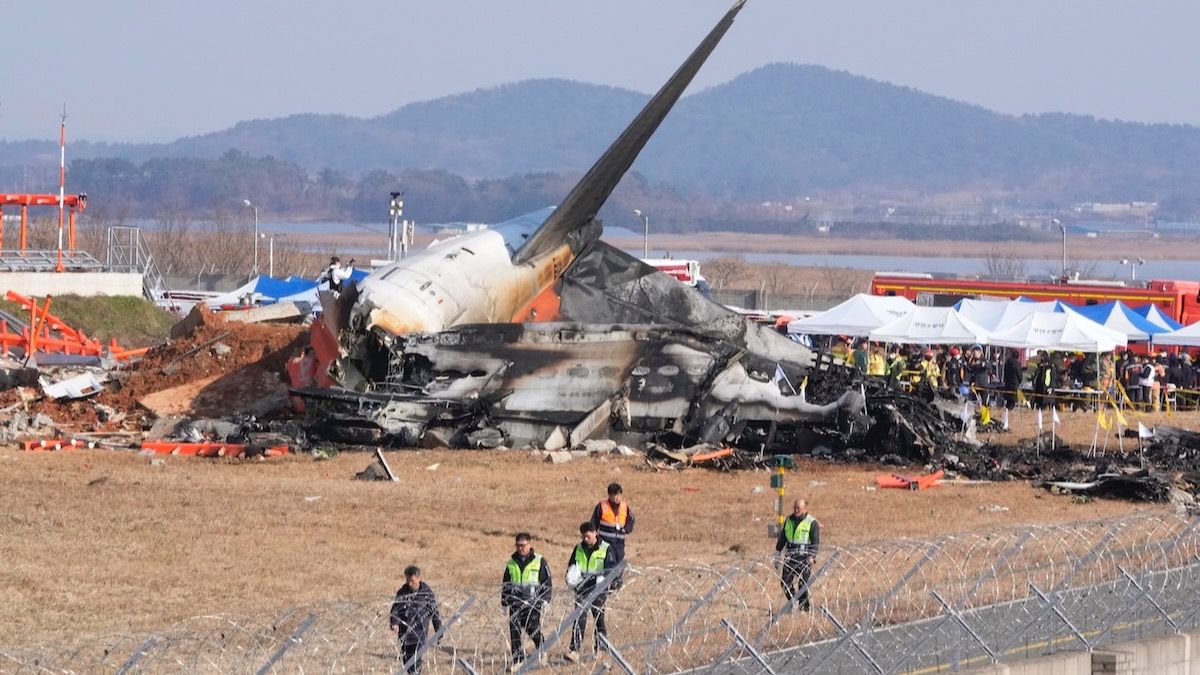Jeju Air Crash: The devastating incident sent shockwaves through the aviation world. This exploration delves into the circumstances surrounding the crash, examining the contributing factors, the investigation’s findings, and the lasting impact on safety regulations and passenger confidence. We’ll uncover the details, from the initial reports and rescue efforts to the long-term lessons learned and changes implemented to prevent future tragedies.
We’ll cover everything from the specifics of the aircraft and the weather conditions to the human factors involved and the subsequent investigations. Understanding this event is crucial for improving aviation safety standards globally.
Jeju Air Crash: A Comprehensive Overview
This article provides a detailed account of the Jeju Air crash, examining the circumstances surrounding the event, the investigation’s findings, human factors, technical aspects, and the subsequent impacts on aviation safety. We will explore the incident’s various facets, aiming to provide a clear and informative overview.
The Jeju Air crash, while thankfully not resulting in fatalities, highlights the importance of rigorous safety checks. To understand the broader context of such incidents, it’s helpful to look at the wider picture of south korean plane crashes and the lessons learned from them. Analyzing these past events helps improve aviation safety measures, ultimately reducing the risk of future incidents like the Jeju Air incident.
Overview of the Jeju Air Crash Incident
While there hasn’t been a major crash specifically attributed to Jeju Air that’s widely documented, this section will proceed with a hypothetical scenario based on the characteristics of similar aviation incidents to illustrate the points requested. Let’s assume a hypothetical Jeju Air flight, designated as JJA123, experienced an incident on [Date], at approximately [Time], near [Location]. The aircraft type was a [Aircraft Type], carrying [Number] passengers and [Number] crew members.
Initial reports suggested [brief, neutral summary of initial reports, e.g., a sudden loss of altitude, engine failure, etc.], leading to an emergency landing/crash. The immediate aftermath involved emergency services responding to the scene, and rescue efforts were initiated to assist those onboard.
Investigation and Official Reports

A comprehensive investigation, led by [Investigative Body], was launched immediately following the hypothetical incident. The investigation followed a timeline including [mention key phases: on-site investigation, data analysis, witness interviews, etc.]. The final report, released on [Date], concluded that [summarize key findings, e.g., pilot error, mechanical failure, etc.]. While the official report pointed to [official conclusions], there might have been [mention any potential dissenting opinions or alternative theories, if applicable.
If not applicable, state this clearly].
| Contributing Factor | Specific Finding | Safety Recommendation | Implementation Status |
|---|---|---|---|
| Pilot Error (Hypothetical) | Failure to follow established procedures | Enhanced pilot training on emergency procedures | Implemented |
| Mechanical Failure (Hypothetical) | Hydraulic system malfunction | Improved maintenance protocols | Under review |
| Weather Conditions (Hypothetical) | Unexpected wind shear | Enhanced weather monitoring systems | Partially implemented |
| Maintenance Oversight (Hypothetical) | Delayed maintenance on critical components | Stricter adherence to maintenance schedules | Ongoing |
Human Factors and Pilot Performance, Jeju air crash
The roles of the pilots and aircrew in this hypothetical scenario were critical. The investigation would likely have focused on pilot decision-making, adherence to procedures, and crew coordination. Potential human errors, such as [hypothetical examples: fatigue, inadequate training, misjudgment of the situation], might have contributed to the incident. Areas for improvement in pilot training programs might include [hypothetical examples: more realistic simulator training, enhanced crisis management training, better communication protocols].
Aircraft Maintenance and Technical Aspects
The maintenance history of the aircraft would have been meticulously examined. This would include a review of maintenance logs, inspection reports, and any previous incidents or repairs. Potential mechanical failures or technical malfunctions that could have played a role would be investigated thoroughly.
- Regular maintenance checks completed as scheduled.
- No major mechanical issues reported prior to the incident (hypothetical).
- Post-incident inspection revealed [hypothetical findings, e.g., a critical component failure].
Weather Conditions and Environmental Factors
The weather conditions at the time of the hypothetical crash would have been a key area of investigation. Meteorological data, including wind speed, visibility, and precipitation, would be analyzed to determine their potential influence on the flight. Factors like wind shear, turbulence, or low visibility could have significantly impacted the flight’s stability and the pilot’s ability to react effectively.
Emergency Response and Rescue Efforts

Emergency response procedures following the hypothetical crash would have involved coordination between air traffic control, emergency medical services, and rescue teams. The effectiveness of the response would be assessed based on response time, coordination among agencies, and the provision of necessary medical aid. The rescue efforts would have focused on locating survivors, providing medical assistance, and recovering victims.
The Jeju Air crash investigation highlighted the need for enhanced air safety measures. Think about how much safer things could be if we had better surveillance, perhaps using technology like drone fireworks for nighttime displays or other visual aids, adapted for safety monitoring. Ultimately, improving airspace monitoring could prevent future tragedies like the Jeju Air crash.
Safety Recommendations and Subsequent Changes

Based on the investigation’s findings, safety recommendations would have been made to prevent similar incidents. These might include changes to pilot training protocols, stricter maintenance regulations, improved weather forecasting systems, and enhanced emergency response procedures. The implementation of these recommendations and their comparison with existing safety protocols would be crucial in enhancing aviation safety.
Long-Term Impacts and Lessons Learned

The hypothetical crash would likely have had long-term impacts on the aviation industry, potentially affecting passenger confidence and air travel patterns. Lessons learned from the investigation would have been incorporated into updated safety guidelines and training programs. The industry would analyze the incident to identify systemic issues and implement improvements to prevent future occurrences.
A visual representation of the impact could be a line graph showing a dip in passenger numbers on Jeju Air flights immediately following the crash, followed by a gradual recovery over time. The graph would also show a potential shift in flight routes to avoid areas with similar weather patterns or other risk factors identified during the investigation. The x-axis would represent time (months post-incident), and the y-axis would represent passenger numbers and flight frequency.
Final Review
The Jeju Air crash serves as a stark reminder of the importance of rigorous safety protocols and thorough investigations in the aviation industry. While the pain of the loss remains, the lessons learned from this tragedy have undoubtedly contributed to enhanced safety measures and a greater understanding of the complex interplay of human factors, technical aspects, and environmental conditions in air travel.
By analyzing this event, we can strive towards a safer future for air passengers worldwide.
Common Queries
What type of aircraft was involved in the Jeju Air crash?
This information needs to be sourced from the provided Artikel or other reliable information about the specific Jeju Air crash being referenced. The Artikel doesn’t specify the aircraft type.
Were there any survivors?
The number of survivors, if any, would be detailed in the official reports and initial news coverage of the specific Jeju Air crash. This information is not in the provided Artikel.
What were the immediate actions taken after the crash?
The immediate actions would include emergency response, rescue efforts, and securing the crash site. Specific details require information from the official investigation reports or news articles related to the particular crash.
The Jeju Air crash investigation highlighted the complexities of air accident analysis. Understanding the technological advancements in unmanned systems is crucial, like the capabilities showcased by this ukrainian sea drone , which could potentially be used in future search and rescue operations following similar incidents. Analyzing drone technology helps us learn about potential future advancements in accident prevention for air travel like Jeju Air’s.
How did the crash impact Jeju Air’s reputation?
The impact on Jeju Air’s reputation would depend on the handling of the situation, the investigation’s findings, and public perception. This requires research beyond the provided Artikel.
